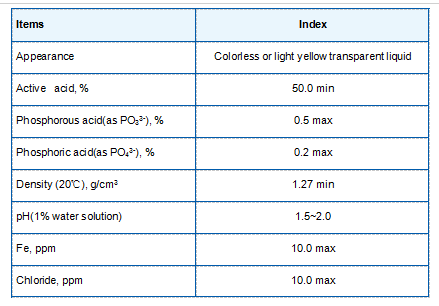cationic polyacrylamide uses
The Versatile Uses of Cationic Polyacrylamide
Cationic polyacrylamide (CPAM) is a synthetic polymer that has gained significant attention in various industries due to its unique properties and versatile applications. As a water-soluble polymer, it is composed of acrylamide monomers and carries a positive charge, making it especially effective in processes where interaction with negatively charged substances is required. This article will explore the diverse uses of cationic polyacrylamide, highlighting its significance in areas such as water treatment, papermaking, mining, and agriculture.
Water Treatment
One of the most prominent applications of cationic polyacrylamide is in the field of water treatment. CPAM acts as a flocculant, aiding in the aggregation and sedimentation of suspended particles in wastewater. When added to water, the positively charged polymer molecules neutralize negatively charged particles, which enhances the formation of larger flocs. This process effectively removes impurities, colloids, and other pollutants, thereby improving the quality of treated water. CPAM is particularly beneficial in municipal sewage treatment plants and industrial wastewater treatment processes, ensuring compliance with environmental regulations and promoting cleaner water bodies.
Papermaking Industry
In the paper manufacturing sector, cationic polyacrylamide serves as a retention and drainage aid, enhancing the efficiency of paper production. By improving the retention of fine particles, fibers, and fillers, CPAM contributes to the creation of higher-quality paper while simultaneously reducing the amount of raw materials needed. Additionally, its use leads to improved drainage rates during the papermaking process, which in turn reduces energy consumption and increases production efficiency. The application of CPAM in this industry not only benefits manufacturers but also helps reduce environmental impact by optimizing resource use.
Mineral Processing and Mining
cationic polyacrylamide uses

Cationic polyacrylamide is also widely employed in mineral processing and mining operations. In these applications, CPAM acts as a flocculant to recover valuable minerals from ores and enhance the separation of solids from liquid processes. The addition of CPAM can lead to improved recovery rates, better concentrate quality, and reduced operational costs. Its effectiveness in clarifying slurries and enhancing dewatering processes has made it an indispensable tool in the mining industry, significantly contributing to the efficiency and profitability of mineral extraction.
Agriculture and Soil Conditioning
The agricultural sector benefits from cationic polyacrylamide through its use as a soil conditioner. CPAM can enhance soil structure, water retention, and nutrient availability, contributing to improved crop yields and soil health. By increasing the soil's ability to retain moisture, CPAM helps reduce erosion and runoff, promoting sustainable farming practices. In addition, its application can lead to reduced irrigation needs, which is increasingly important in water-scarce regions. Farmers who utilize CPAM report better soil aeration and root development, demonstrating its dual role in enhancing both agricultural productivity and environmental sustainability.
Oil and Gas Industry
Cationic polyacrylamide finds applications in the oil and gas industry as well, primarily in drilling and enhanced oil recovery operations. In drilling fluids, CPAM helps improve viscosity and stability, optimizing the overall drilling process. Moreover, during enhanced oil recovery, CPAM can improve the mobility of oil, facilitating its extraction by reducing interfacial tension and promoting better displacement of oil from reservoirs. This application contributes to more efficient energy recovery, highlighting the polymer's essential role in maximizing resource extraction in this sector.
Conclusion
The versatility of cationic polyacrylamide is evident across numerous industries, from water treatment and papermaking to agriculture and mining. As a key player in these applications, CPAM not only enhances operational efficiency and product quality but also promotes environmentally responsible practices. With growing global emphasis on sustainability and resource optimization, the importance of cationic polyacrylamide is expected to expand further, paving the way for innovative solutions in various fields. Its adaptability and effectiveness make CPAM a valuable asset in the pursuit of cleaner, more efficient processes in today’s industrial landscape.
-
Pbtc Scale InhibitorPBTC: A Scale Protector for Industrial Water TreatmentNewsAug.05,2025
-
Organic Phosphonate: An Efficient Defender in the Field of Scale InhibitionNewsAug.05,2025
-
Hydrolyzed Polymaleic Anhydride: Green Pioneer in Scale Inhibition FieldNewsAug.05,2025
-
PAPEMP Polyamino Polyether Methylene Phosphonic Acid For SaleNewsAug.05,2025
-
Flocculant Water Treatment: A Pioneer in Purification in the Field of Water TreatmentNewsAug.05,2025
-
Benzyl Isothiazolinone: An Efficient and Broad-Spectrum Antibacterial Protective GuardNewsAug.05,2025





